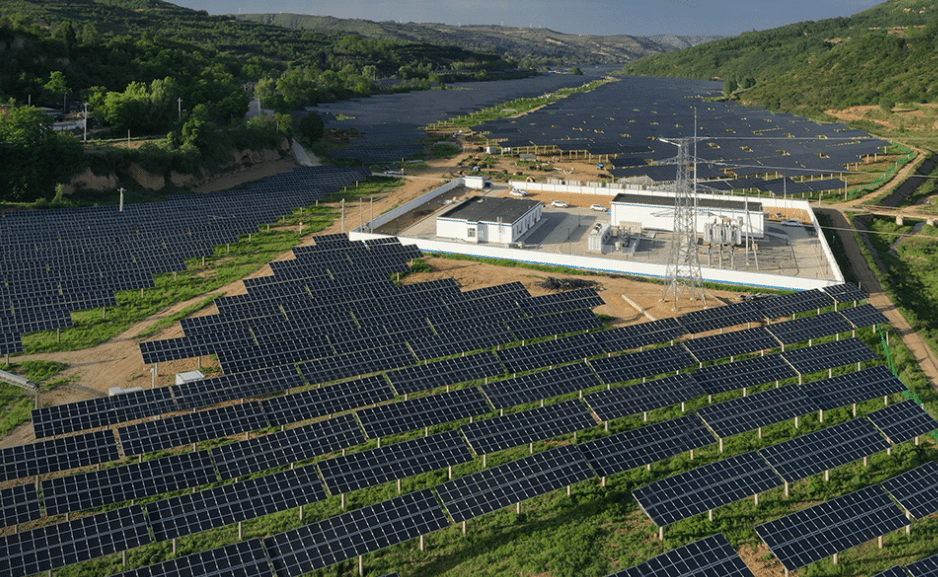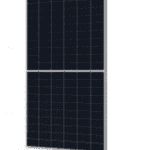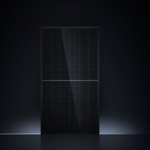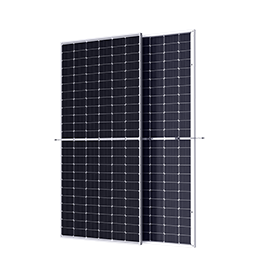
As energy prices grow and sustainability becomes a global concern, solar power has evolved as one of the renewable energy […]

The history of solar energy technology dates back to the 1800s.
A French physicist known as Edmond Becquerel discovered the photovoltaic effect. In one of his experiments, he realised that cells emit more electricity when exposed to sunlight.
Since then, solar energy technology has been evolving and growing. Australia is the leader in solar tech and has immensely contributed to its growth. It is the largest consumer of solar panels in the world. This is mainly due to its sunny climate.
Most residents in Australia prefer to utilise solar panels. The reason is that solar panels have tons of benefits. They reduce carbon footprints, save on cost, need minimal maintenance, etc. In all cases, going green usually starts with the use of solar panels.
Here is the main series of Trina Solar panels across residential, commercial, and utility‑scale applications:
| Series | Cell / Construction | Power Range | Typical Use |
|---|---|---|---|
| Vertex S / S+ | Mono, 120‑cell | ~400–450 W | Mono/poly |
| Vertex 210R | Mono 210 mm | ~430–585 W | Rooftop large-scale |
| Vertex N / 580–720W | N‑type HJT / bifacial | ~580–720 W+ | Utility-scale, ground mount |
| AllMax | Mono / poly | ~255–315 W | Small-scale install |
| TSM‑DE / NEG | Mono PERC, 60-cell | ~370–400 W | General residential |
Trina Solar is one of the best manufacturers of solar panels in the world.
The company was created in 1997 by Gao Jifan. During those years, Trina was just a PV enterprise in China. However, today it is one of the largest manufacturers of solar panels in the world.
Trina Solar greatly associates its success with quality production and customer satisfaction. One of its main markets is in Australia, where the Australian Solar industry is flourishing and thriving thanks to Trina.
In layman’s language, a solar panel is a piece of technology used to convert light to electricity.
These panels contain solar cells that collect and convert light energy. The solar cells are mostly made from silicon, boron, and phosphorus.
Also read: What affects the cost of solar panel installation?
Technically speaking, there are four major types of solar panels. There are monocrystalline, polycrystalline, Thin-film, and PERC solar panels. Trina Solar manufactures all these types of solar panels. Moreover, it continuously incorporates the latest tech into its solar panels. Some of Trina’s most famous solar panels are the following:

The Honey solar panel, meaning “sweet,” is one of the best solar panels on the market. Indeed, its sweetness is widely felt as it incredibly lowers energy costs. Trina Solar offers a 25-year warranty on these solar panels.
The Honey series can be monocrystalline, PERC, or polycrystalline, depending on your preference.
The efficiency level of these solar panels is fantastic. Honey solar panels are ideal for limited spaces, residential, and even commercial areas.
Now available is the new Trina Honey M range and Honey M black, with sizes ranging from 330W to 380W. They are available in white and black backsheets instead of the standard silver. These solar panels have 20.7% efficiency, which is superb.
They primarily utilise half-cut and multi-busbar technology (MBB). Trina Solar is shifting mostly to MBB energy due to its numerous benefits. These benefits include increased efficiency, reliability, reduced cell temperature, and more.
Honey series is the most popular solar panel utilised in Australia. Its design fits perfectly with the Australian climate. The Honey series solar panel is ranked best by PV Evolution Labs testing.
Also read: How much is the NSW solar panel rebate?

The Vertex 670W+, 600W+, and 550W+ solar panels are good for large-scale operations.
For example, they can be utilised in large Australian farms. The latest one is the Vertex 670W+ solar panel. It has an efficiency of 21.6%, which is fantastic.
Vertex solar panels do well in large-scale operations since they utilise multi-busbar technology. The technology enables them to produce a high amount of energy. They also have a silicon wafer that has a size of 210mm.
The Vertex 410W+ and 510W+ solar panels are suitable for homes and commercial rooftops. These are more petite versions of solar panels that came after the creation of the larger ones.
They are lighter and utilise the MBB, mono-PERC, and high-density format. They have an efficiency of about 21.1%, which is impressive.
Vertex solar panels are bi-facial as they absorb light from both sides. It is the reason why they do so well in Australia. They can regulate the surrounding temperature, whether it is hot or cold.

Duomax solar panels have been created using two technologies: bifacial cells and dual glass technology. Moreover, these solar panels come without aluminium framing, which leads to less dirt accumulation.
Interestingly, the Duomax solar panel can absorb light from the back face.
That brings about up to 25% more energy. The dual glass tech also increases the lifespan of this solar panel. However, Duomax solar panels are pretty heavy compared to traditional solar panels.
Trina keeps up with the latest tech:
These features make Trina a smart choice for many homes and businesses.
Australia’s weather can be harsh; You will experience hot sun, strong winds, heavy rain, hail, and salty coastal air.
All these calls for a solar panel that can handle it all, and Trina Solar seems to understand this very well, as theirs are designed to withstand these conditions.
The Trina panels go through over 30 tough durability tests, including:
Thanks to these tests, Trina panels are built to last over 25 years, and some models come with a 30-year warranty.
Trina doesn’t just promise big; they back it up.
Here’s what you get:
And don’t forget — this is a Tier 1 company with a stock market presence.
That means they’re not going anywhere. So, if you need that warranty in 20 years, they’ll still be around to honour it.
Trina hasn’t just passed tests. They’ve impressed the right people.
You don’t win awards and pass strict tests unless you’re doing something right. Trina is.
Trina’s not bargain-bin cheap — but you’re also not paying luxury brand prices just for a logo.
Here’s a quick range:
Considering what you get ( long life, fewer repairs, strong energy savings), it’s fair value. You’re paying for less stress over time, not just a lower upfront bill.
Let’s break it down simply.
Aussie homeowners and installers like Trina for its strong build and reliable performance.
Installers find them easy to work with, and customers often see savings thanks to lower power bills and solar rebates.
On review platforms like Solar Quotes, Trina has a 4.8-star rating after 2,547 verifiable reviews.
This high rating means Trina panels are doing exactly what Aussie households expect—reliable performance, solid value, and lower power bills over time.
Some mention slow deliveries or price differences between installers, but this is common across the solar market.
Every Trina panel is made using high-quality components:
Trina panels are designed to be simple:
Installers across Australia are trained to install Trina, so the setup is smooth and up to code.
Compared to big names like LG, SunPower, or Canadian Solar:
Trina Solar is an excellent pick if you want top-quality panels at a fair price.
Choose Trina if:
But you might look elsewhere if:
Start with the basics: check for a solid warranty (at least 25 years is a good sign) and see if the brand is Tier 1 rated by Bloomberg.
That means it’s trusted in the industry.
Then, look for certifications like IEC 61215 or 61730, which show the panels meet global safety and performance standards.
You can also ask your installer about test results, long-term output, and how well they hold up in your local weather conditions.
You can’t really “test” panels before buying them, but you can do your homework.
Ask your installer for real-world performance data and check if the panels have passed PVEL or TÜV testing (these are trusted labs).
Look for reviews from other Aussies using the same model. You can even ask to see a working system using Trina panels nearby — a good installer will be happy to show you proof.
Start by checking your inverter or solar monitoring app — most systems show live and daily output.
Compare that with your system’s expected performance based on the number of panels, your location, and the time of year.
If it’s consistently lower than expected, it could be shading, dirt, or a system issue.
A good installer can run a quick check to see what’s going on.
Not much, honestly. They’re pretty low-maintenance. A light cleaning every 6–12 months (especially if you’re near the coast or in a dusty area) helps keep them performing well.
Just use water and a soft cloth or sponge — no harsh chemicals.
Also, keep an eye on the inverter for error messages, and maybe get a yearly system check just to be safe.
A few key things can change how well your panels work:
Shading – Even a little shadow can drop output.
Dirt – Dust, bird droppings, or salt can block sunlight.
Angle and direction – North-facing with the right tilt gives the best results in Australia.
Heat – Panels lose a bit of efficiency in extreme heat.
Panel quality – Higher-end panels (like Trina’s newer models) often use better tech for higher efficiency.
Keep it clean, dry, and shaded. Inverters don’t like heat or moisture.
Don’t block the vents, and give it room to breathe.
Also, don’t try to open or fix it yourself — leave that to your installer or a licensed tech.
Regularly check the display for any warning signs or error codes.
Here are a few tips:
Clean them – A simple wash now and then can boost output.
Keep them cool – If possible, make sure there’s airflow around the panels.
Trim nearby trees – Shade is the enemy of efficiency, so clear it.
Upgrade your inverter – In most cases, a more efficient inverter makes a difference.
Use monitoring tools – They help you catch small drops in performance early.
Even small tweaks can help you get the most out of your system.
Trina Solar is the go-to solar panel company. Their packages and offers are just on another level.
They are ranked as Tier One solar panel manufacturers by Bloomberg, an institution that checks on the bankability of solar panel manufacturers. This refers to whether a conventional bank would lend money to the solar manufacturer.
Also read: Best Solar Feed-in Tariffs in New South Wales
Trina Solar, being Tier One, shows that it has sound financial records. Did you know Trina Solar is also listed on the Shanghai stock market?
In addition, it was one of the best performers in the LID + LETID test. Trina solar panels are, without a doubt, excellent, and their good quality is evident.
Moreover, the company always supports and brings forth new technology like N-type cells, Multi-busbars (MBB) and even advanced bi-facial cells.